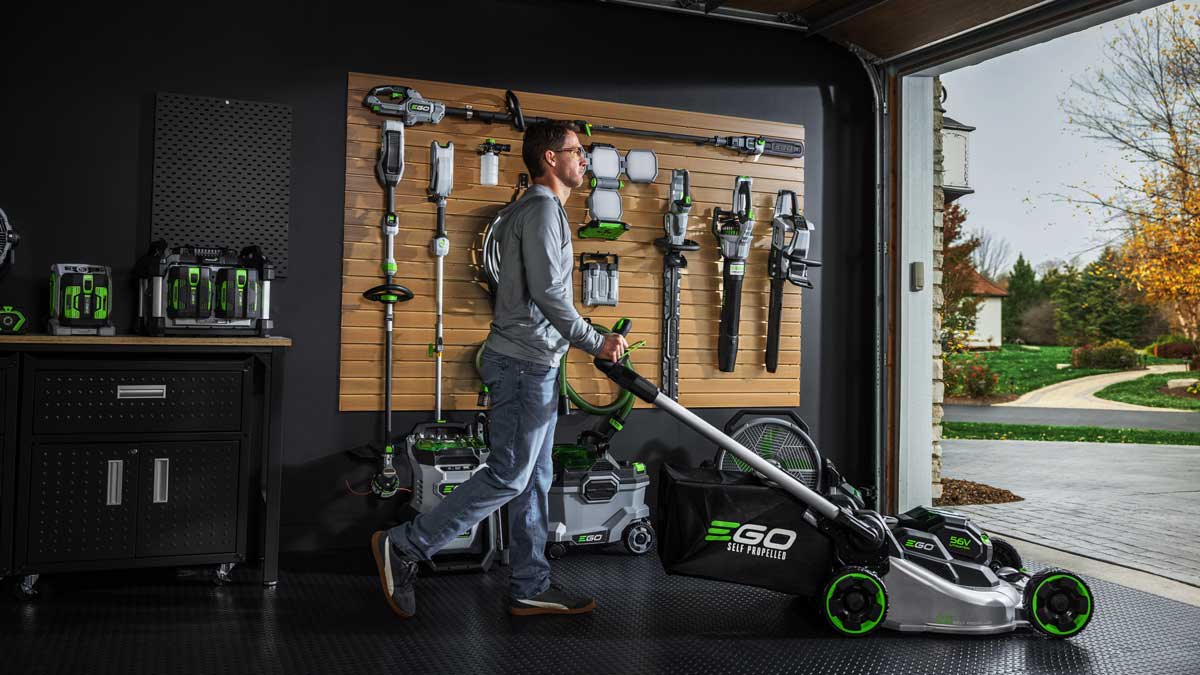Best Battery Platforms for Power Tools

Consumer Reports tests battery power tools at our facility in Yonkers, N.Y., as well as in Florida (where there’s grass year-round). We don’t accept products for testing from manufacturers. Instead, we send out shoppers to purchase equipment in stores and pay the retail price, just as you would.
To come up with our ratings of battery platforms for power tools, we pull together data from CR’s own individual product tests and average the scores of a brand’s highest-performing tools for that platform. We include a brand’s highest-performing string trimmer, leaf blower, chainsaw, hedge trimmer, lawn mower, drill, and impact driver. Not every brand offers each of these products (we choose platforms that offer at least three), while some brands offer more than one model in each category.
For our individual product tests, we measure performance, how easy the tools are to handle, and noise at ear level Plus, we compare battery yard tools to gas models to determine whether battery tools pack the same punch. Here are more details about what the tests look like for the tools that factor into our battery platform ratings:
For string trimmers, we test how evenly a model trims high grass, yard weeds, and even dense brush. We also test how effectively it handles edges along a walkway. We look at how easy each trimmer is to hold, maneuver, and operate, noting how difficult it is to start up or feed extra line through the cutting head.
For leaf blowers, we measure how long it takes for each blower to move a large pile of leaves and how well they loosen leaves and other debris stuck or embedded in grass.
For chainsaws, we time how long it takes for each to work its way through a 10-inch-thick oak beam. We consider how well it cuts and take note of how many cuts the saws can make on a single charge. We also consider key safety features.
For hedge trimmers, we test for cutting capacity, handling, and safety. And we put these tools to the test against the huge swaths of invasive bamboo that we have at our New York campus. Testers start with small growth, about a quarter-inch in diameter, and work their way up to thicker shoots. We take note of how quickly and cleanly each tool works.
For lawn mowers, our testers and engineers work in Florida in the late winter to test new models on lawns that we specially prepare. We then put the mowers to work, cutting identical swaths of grass in every cutting mode—like bagging, mulching, and using the side discharge—to see how well models handle each task. We also assess how evenly each mower cuts.
For drills, we run them through a series of tests using a device called a dynamometer, which measures torque under different loads. We translate those readings into scores for power, speed, and run time.
For impact drivers, we use dynamometers to measure both the torque the impact driver can generate and the number of impacts per minute. To assess run time, we measure how long a single battery can power the unit under a standardized load on our dynamometer. We also run tests to see how long it takes to fully charge the battery.
For snow blowers, we make a mixture of sawdust saturated with water for test consistency because not all snow is the same. This mixture can simulate a standard snowfall or be molded into a mound that simulates a plow pile, like the ones left at the foot of a driveway. We time how fast each blower cuts through the dense mixture. We also note how far the sawdust is thrown and how clean the surface is. We didn’t include snow blowers in our battery platform ratings, but did note if a brand had one that we’ve tested.
For pressure washers, we measure how much pressure each model can produce in psi, then use the pressure washer to strip paint from plastic panels, timing how long it takes. We also measure noise and size up ease of use. We don’t include pressure washers in our battery platform ratings, but note if a brand has one we’ve tested.
Source link







